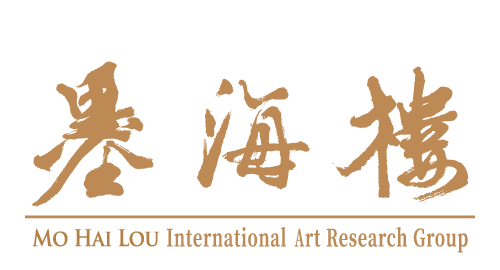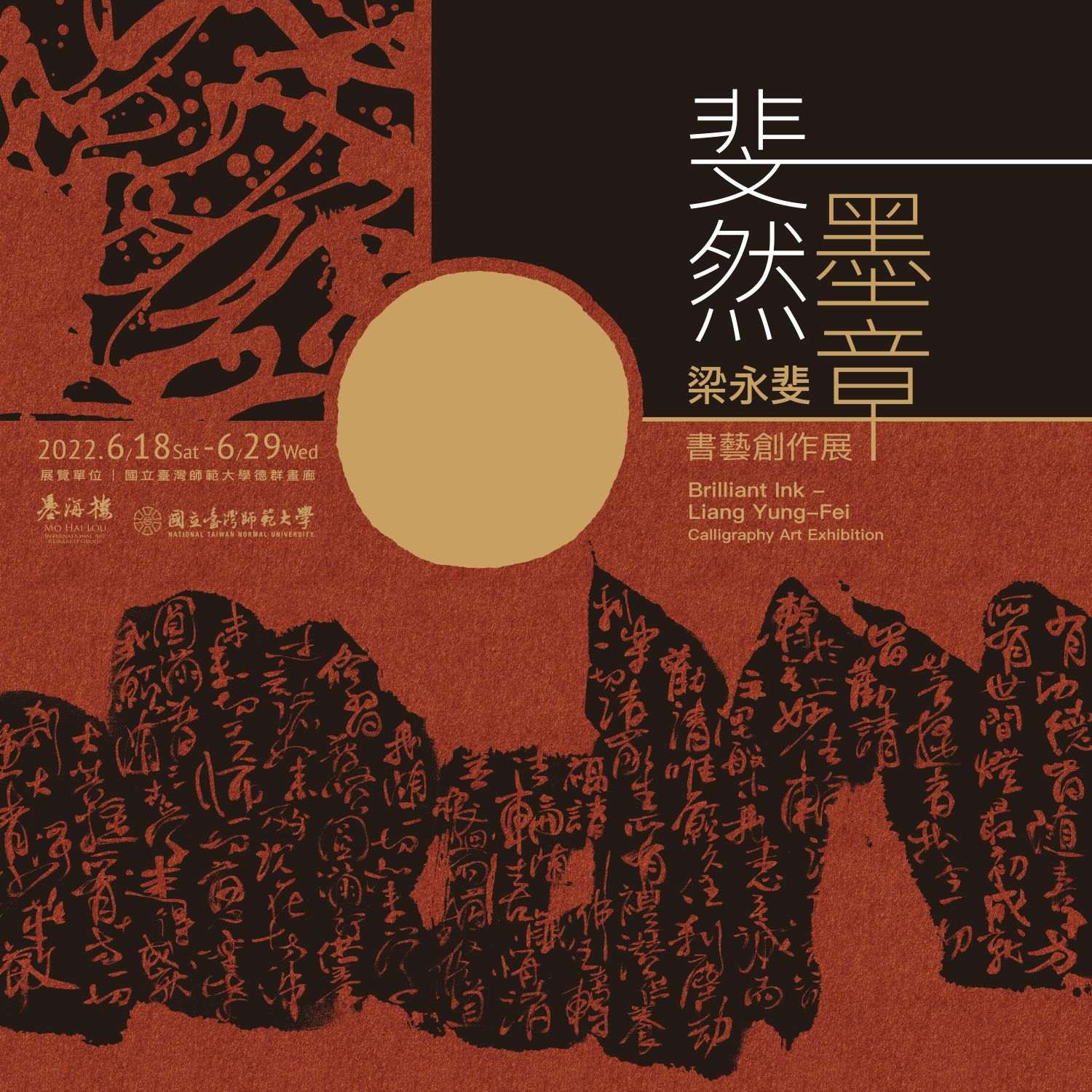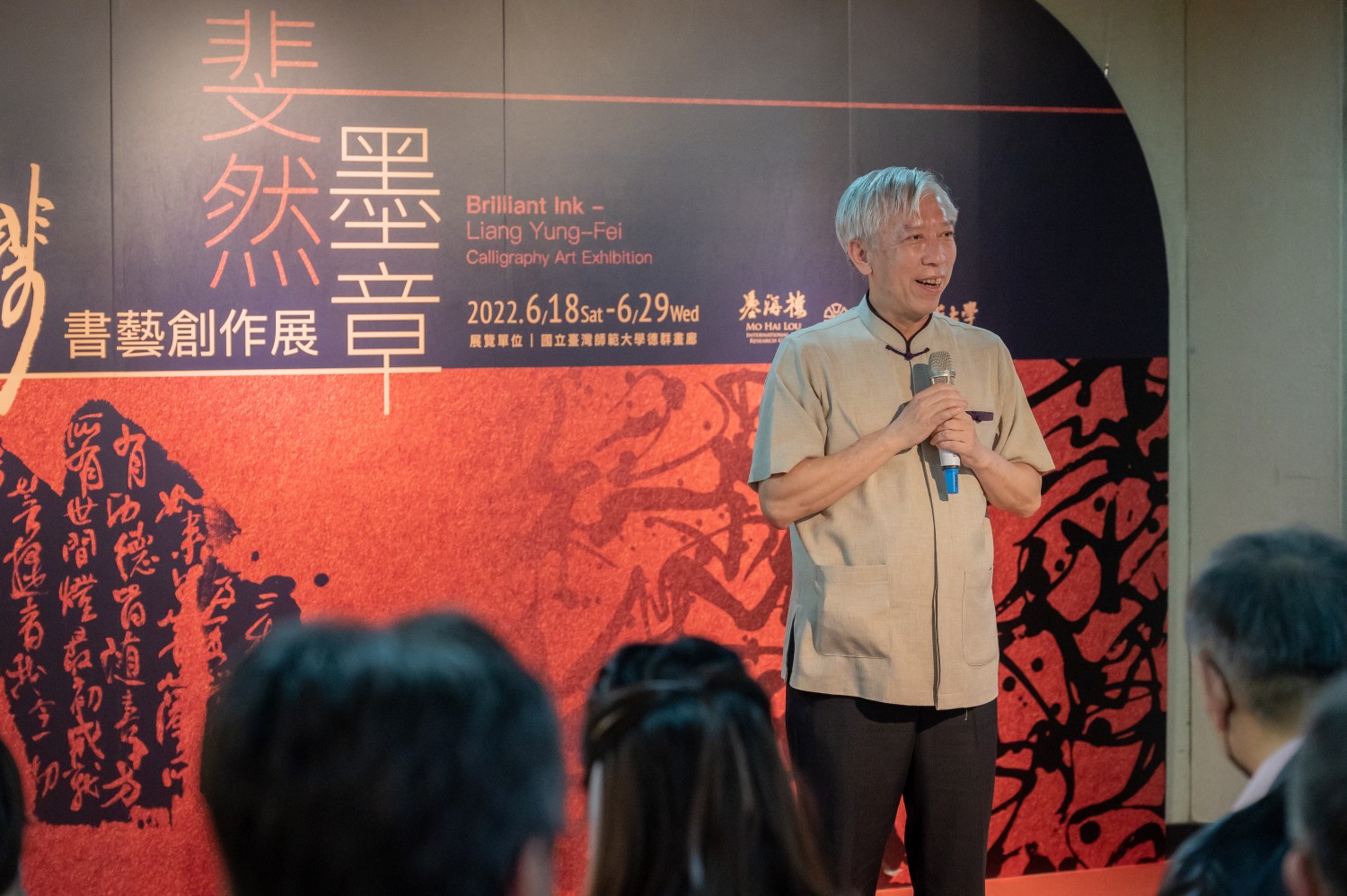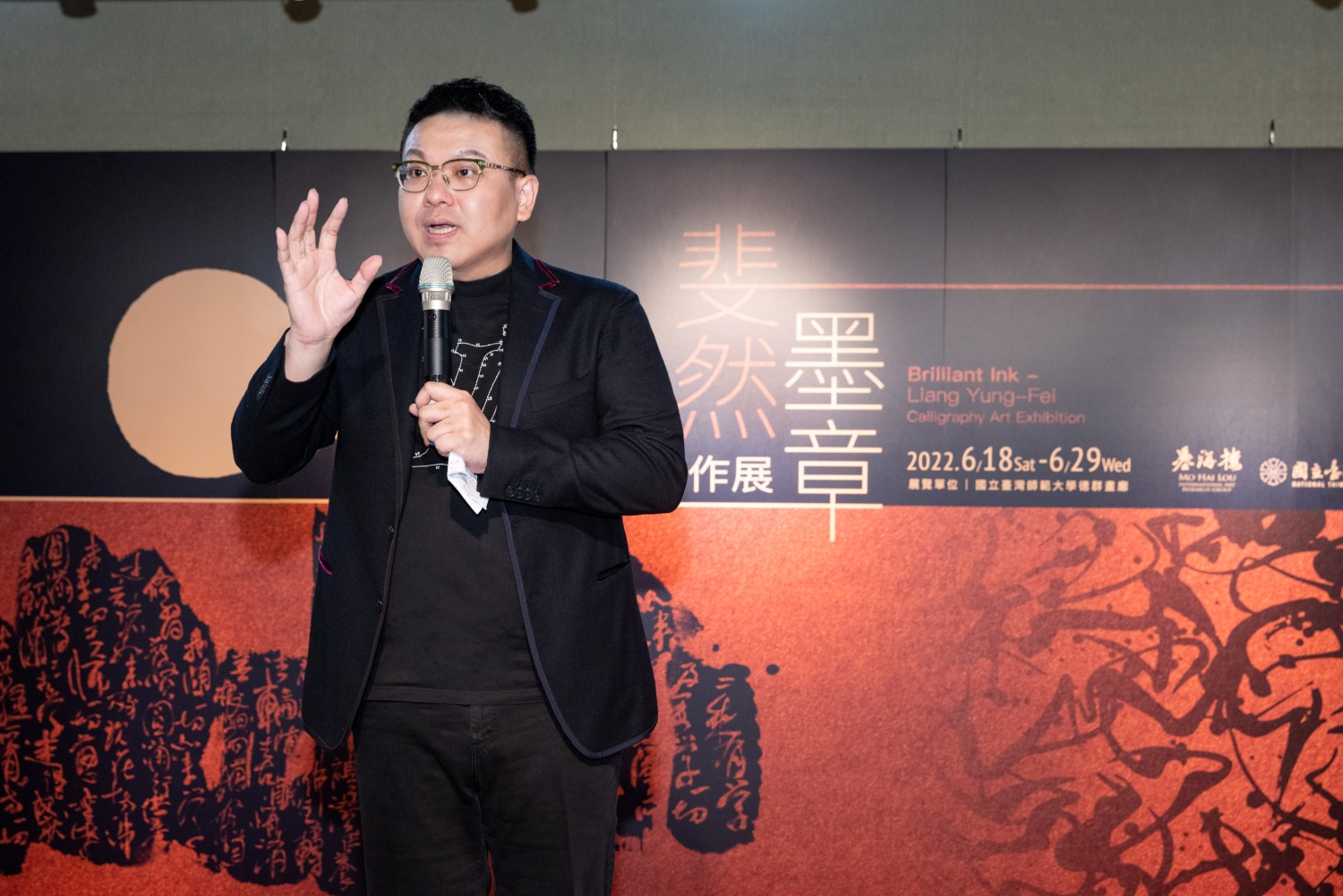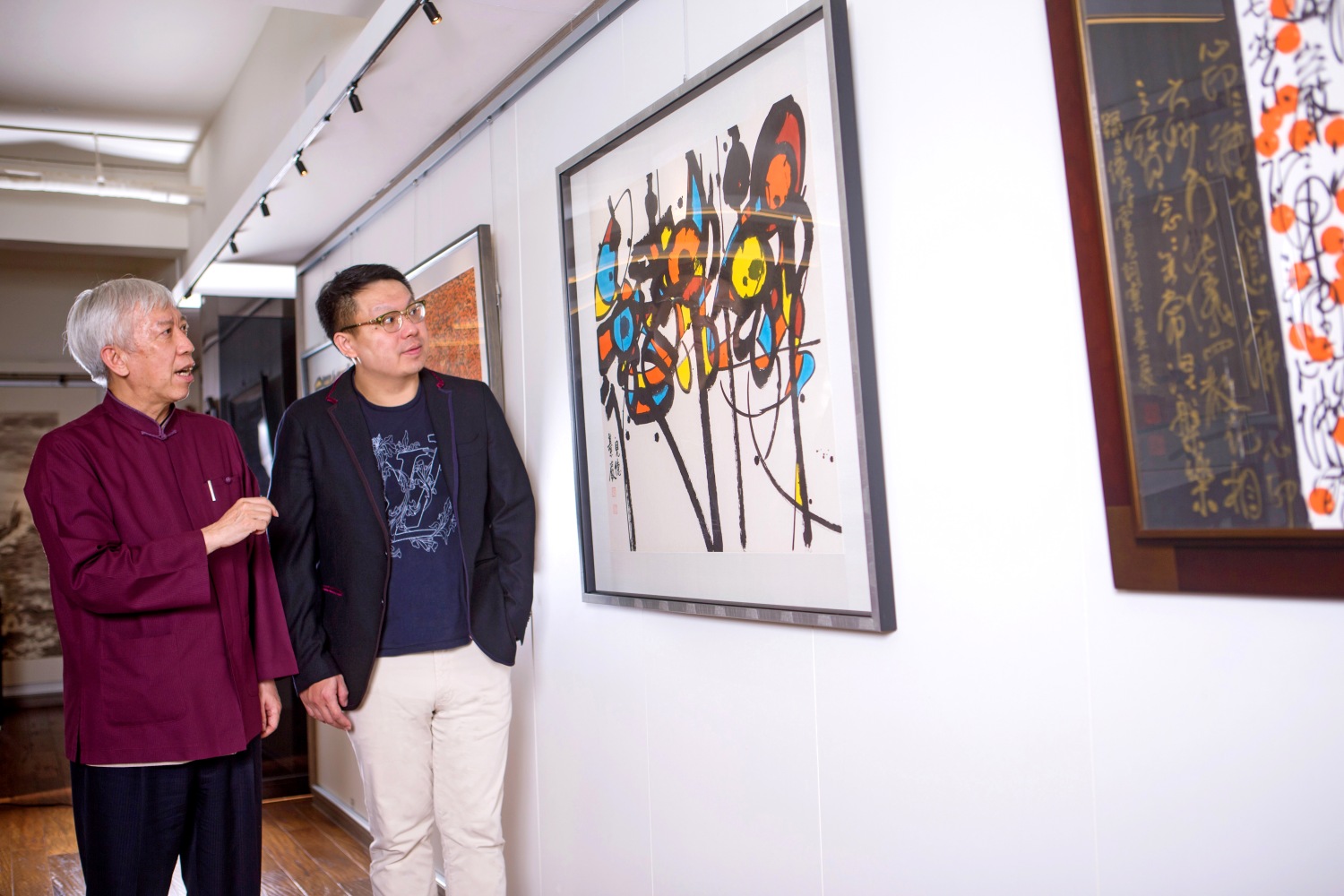Liang Yongfei, currently serving as the director of both the National Taiwan Museum of Fine Arts and the National Museum of Taiwan History, will hold an exhibition at his alma mater, National Taiwan Normal University. The exhibition, titled Impressive Ink Chapters: Character as Art, A Synthesis of East and West – Liang Yongfei Calligraphy Art Exhibition, will take place in the Dequn Gallery of the Department of Fine Arts at NTNU.
Curated by Dr. Ye Guoxin, an art appraiser from the Ink Sea International Art Research Institute, this exhibition showcases five series of Liang’s recent works, displaying the transformation of the artist’s style through 50 representative pieces. These artworks trace his journey through five distinct phases: tradition, form and style, transformation, brilliance, and boundlessness. This process has allowed Liang to cultivate a unique artistic language, marking his evolution from “calligrapher” to “calligraphy artist.” An exhibition catalog featuring 100 of Liang’s works, his tenth collection, will also be published.
Born in 1962 in Gaoshu Township, Pingtung, Liang Yongfei was introduced to calligraphy by his uncle, Liang Zhaojin, at a young age. Although he studied physical education at Taitung Teachers’ College during his youth, his passion for calligraphy remained strong. Liang founded a calligraphy club in school, where he served as president, receiving mentorship from Tao Jinming, Professor Hong Wenzhen, and Principal Chen Dingqi, who helped him lay a solid foundation in calligraphy. Starting with the style of Ouyang Xun, he later studied various scripts, including clerical, seal, running, cursive, and even bronze inscriptions, diligently copying inscriptions from various steles. Over the past 30 years, Liang has accumulated nearly 2,000 works, balancing his creative pursuits with his public service career.
According to Liang, his work is rooted in Eastern tradition, adhering to the “laws” of traditional calligraphy—rules governing writing and style—while transcending these boundaries through methods like breaking and analyzing characters. This approach expands the expressive potential of lines, showcasing their dynamic tension. Additionally, his work incorporates Western elements, exploring the spatiality of lines with variations in thickness, length, curvature, fluidity, and craftsmanship. In this way, his pieces achieve a sense of rhythm and painterly quality, resembling the abstract compositions of Western artists like Joan Miró and Piet Mondrian from the late 19th century
Ye Guoxin, curator and founder of Ink Sea International Art Research Institute, expressed admiration for Liang’s deep understanding of traditional masters’ styles, ink techniques, spatial arrangement, artistic philosophy, and aesthetics, as well as his insight into the creative ideas, methods, and techniques of both classical and contemporary Western artists. He noted that this exhibition not only reflects Liang’s artistic career to date but also serves as a snapshot of the development of Taiwanese calligraphy art in the latter half of the 20th century. From the late 19th century to the late 20th century, Eastern calligraphy and Western abstract art influenced each other, creating a new image for contemporary Chinese ink painting. Liang, affected by this trend, continually seeks innovation within stability, pushing the boundaries of traditional calligraphy to make it relevant to modern audiences.
Ye stated that this exhibition will have a profound and lasting impact on the future development of Taiwanese calligraphy and painting, passing the torch of this art form to younger generations in Taiwan. We look forward to seeing Liang Yongfei continue exploring and innovating on his creative path, breaking new ground, and using his unique artistic language to demonstrate the vast beauty and boundless possibilities of calligraphy and painting to the art community and enthusiasts alike.
